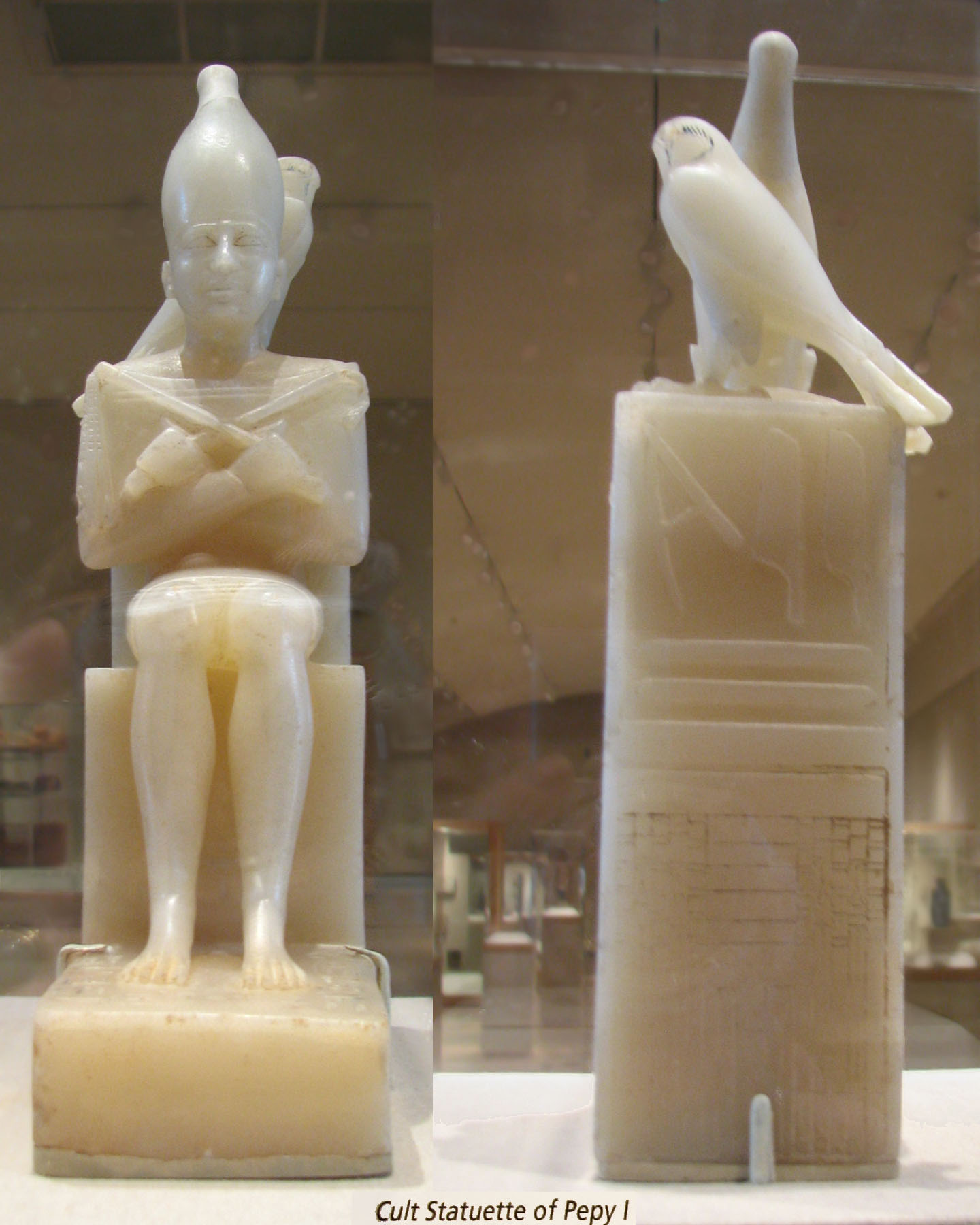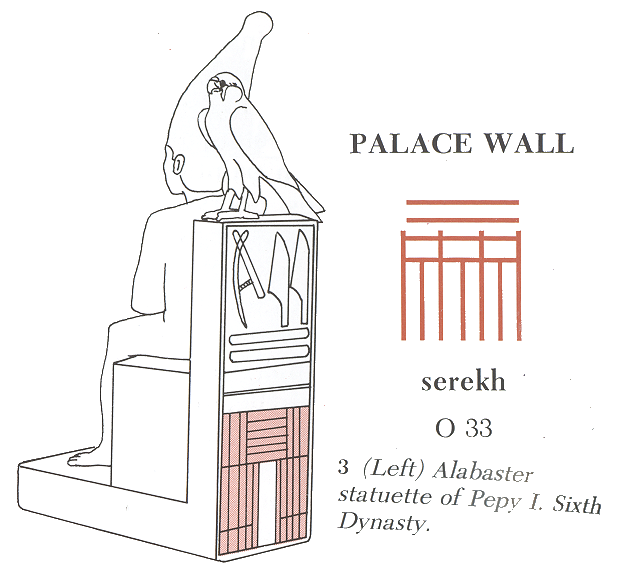"Despite early problems, the reign of Pepi I appears to have been one of the most prosperous of the entire Old Kingdom." "Pepi I built at Bubastis, Saqqara, Abydos, Dendera, and Elephantine, i.e., the entire length of Egypt."(_The Encyclopedia of the Egyptian Pharaohs_, by Darrell D. Baker, page 293)
From the info cards
"Almost any temple sculpture could serve as a cult statue, but the Egyptians only placed the most important cult images-as we believe this one of Pepy I to have been in a temple's innermost room. This example was repaired at least twice in antiquity.
"Although Pepy I was a king of Dynasty 6, this statue was carved in the style of Dynasty 4. other figures of Pepy I that were not created as cult images show a more innovative mode. The choice of a traditional style reflects the conservative tendencies that influenced the carving of cult images."
The Sed-Festival
"Pepy I appears here in the costume of the sed-festival, a complex series of rituals that reaffirmed a king's physical power and his right to rule. To emphasize the idea of royal renewal celebrated by the festival, the sculptor has added certain details referring to the two dominant themes of rebirth in Egyptian religion: the falcon behind the king represents the solar god Horus, who reappears daily in the heavens; the crook and flail held by the king are emblems of Osiris, lord of the dead who died and was magically restored to life."
In Reading Egyptian Art, Richard Wilkinson has an illustration of this piece, showing its back revealing the serekh hieroglyph:




